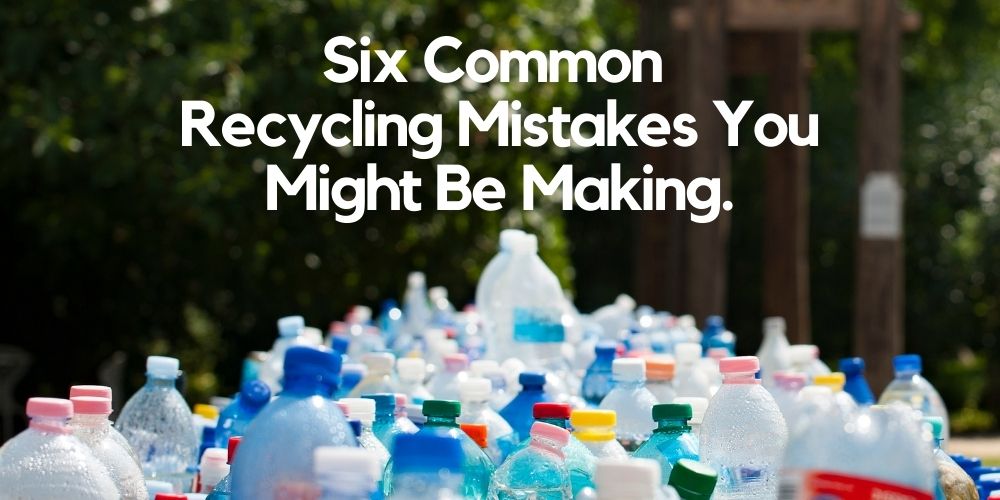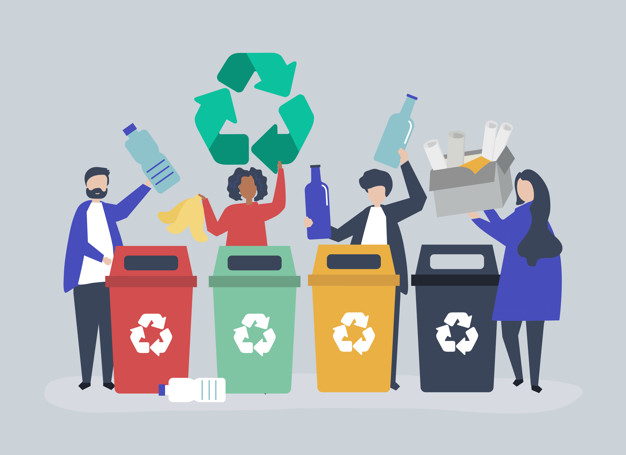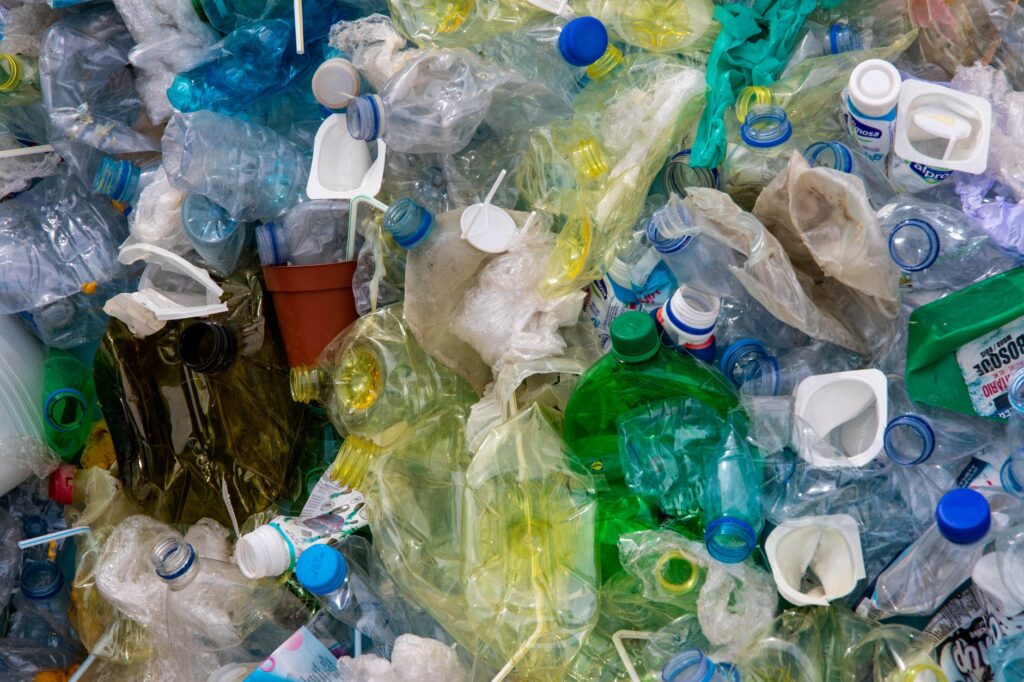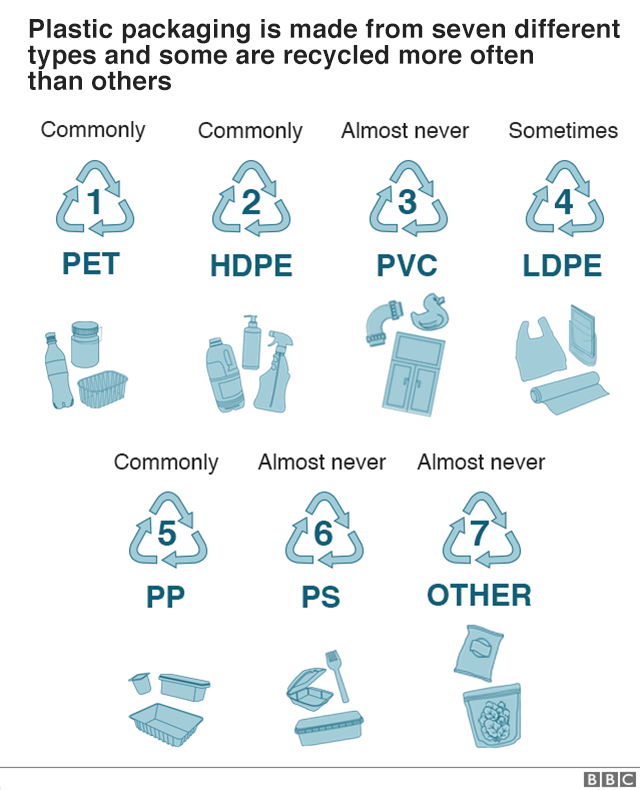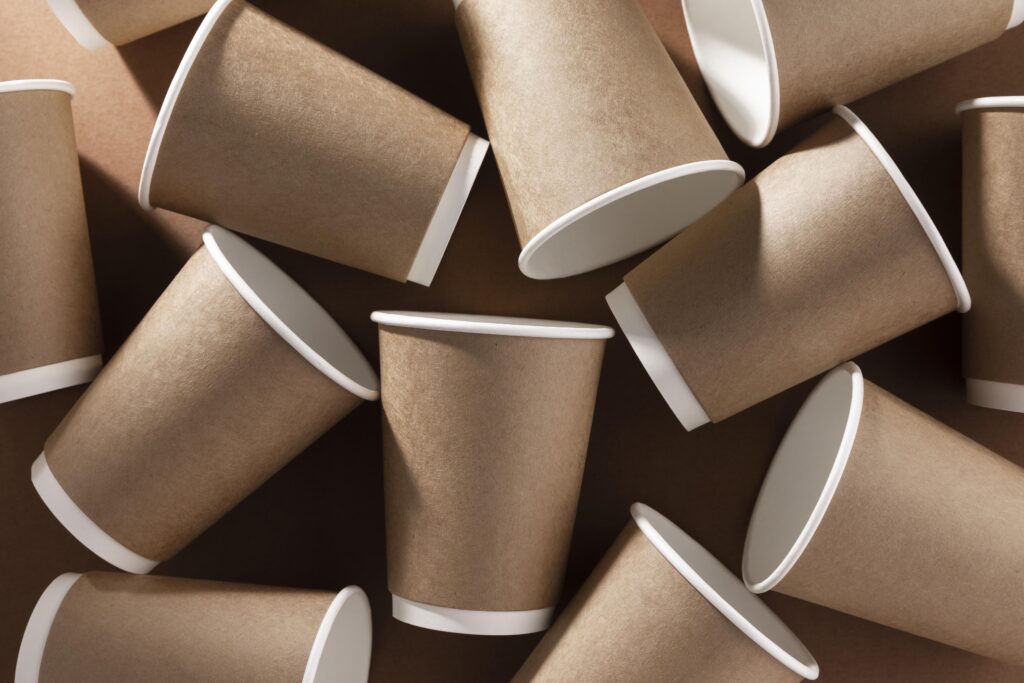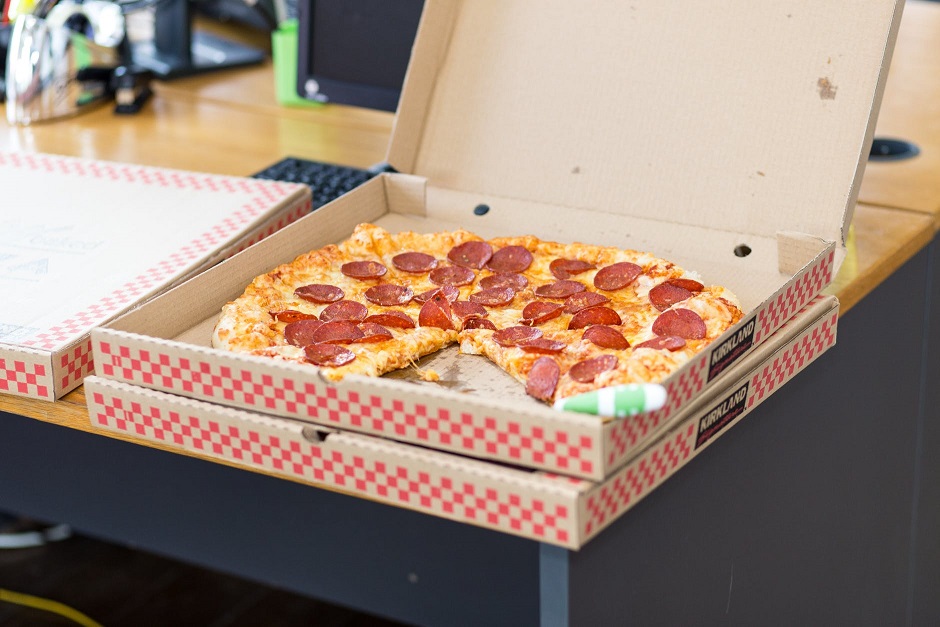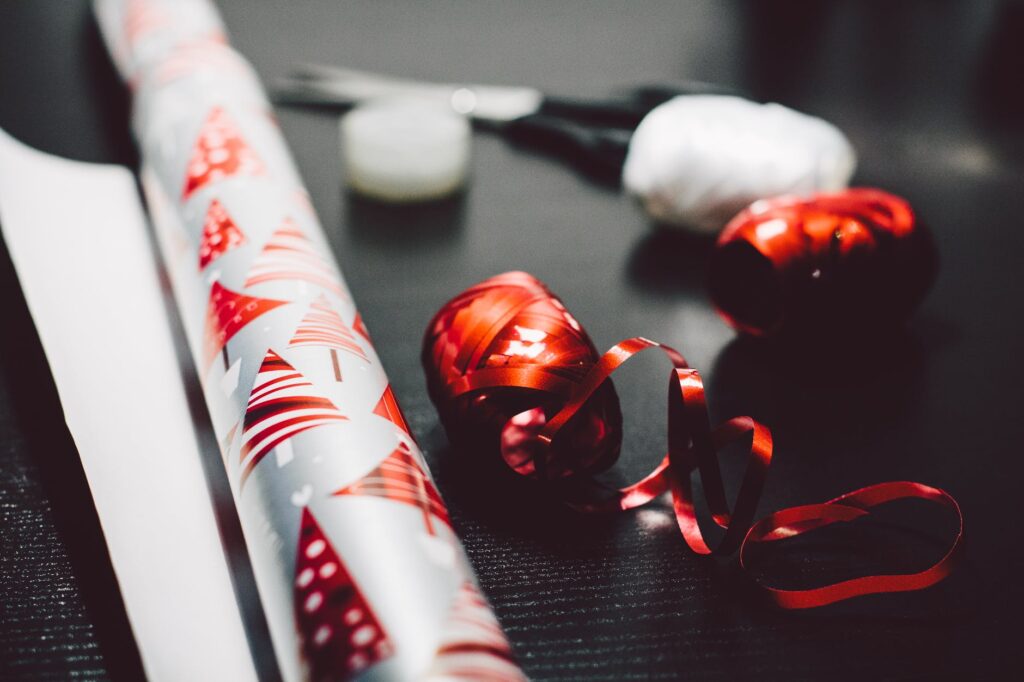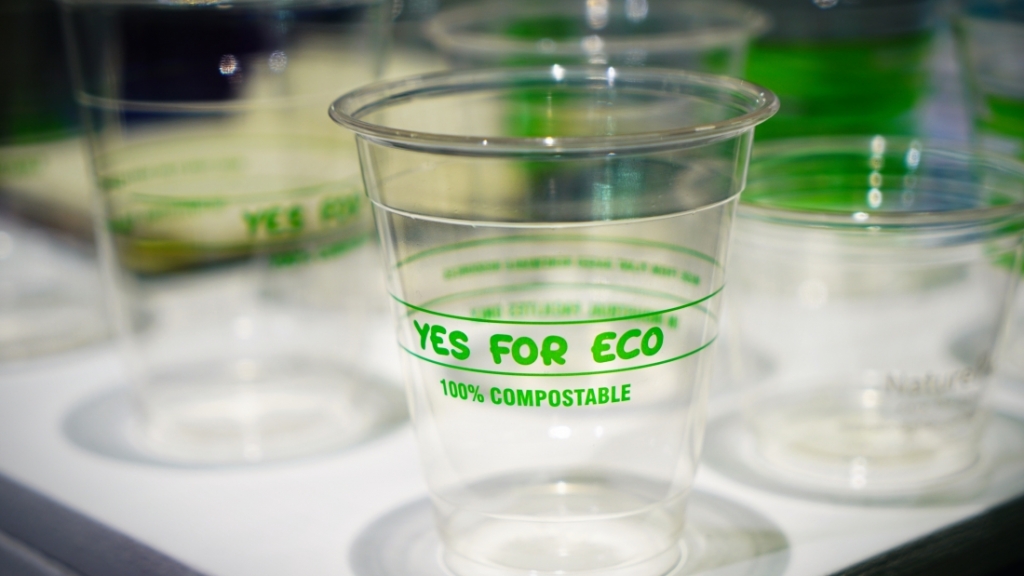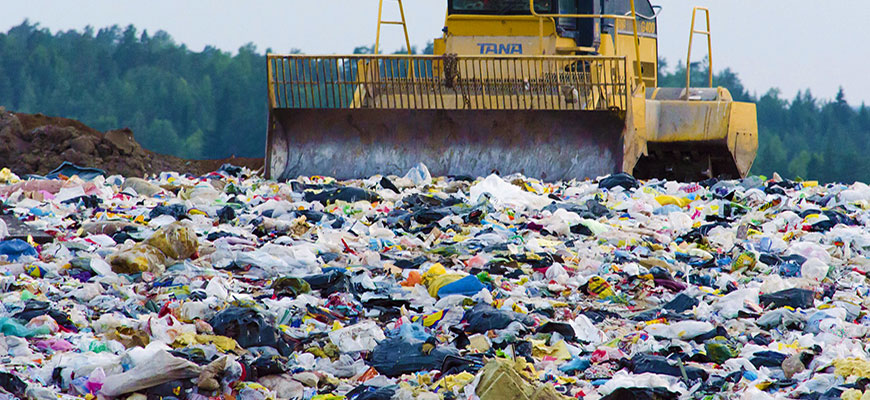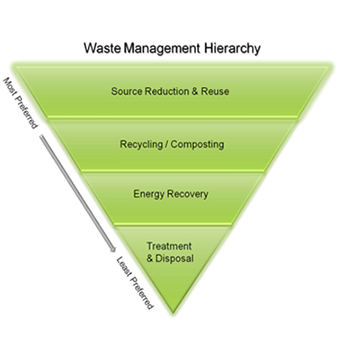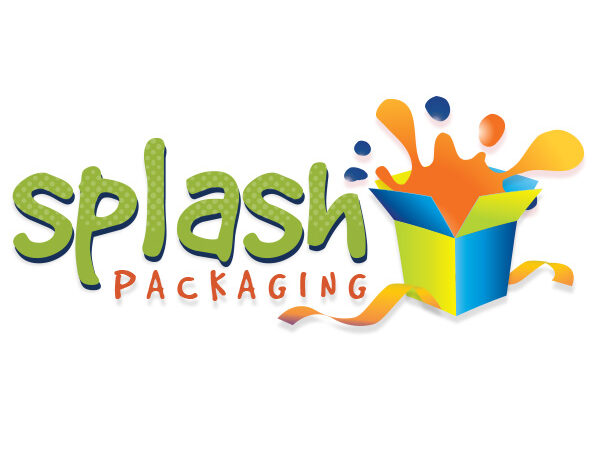By Splash Packaging TeamHoliday Packaging, Packaging Resources, Sustainability in the Packaging Industry
Six Common Recycling Mistakes You Might Be Making.
Recycling your packaging is a great way to reduce your environmental impact and help with resource conservation. But did you know that when recycling gets contaminated with non-recyclables it makes it extremely difficult or even impossible to properly sort the items? Sometimes entire batches of recyclables have to be dumped into the landfill due to contamination.
Learning how to properly recycle your packaging and other household items can help streamline the process in recycling facilities which leads to better efficiency. There is a lot of confusing and unclear information out there, so many people may be putting the wrong items in their recycling bin without even knowing it.
These six common recycling mistakes might be jamming up your local recycling plants and causing more harm then good. Read on to find out what recycling mistakes you might be making, and what you should do instead.
Mistake #1: Recycling plastic packaging without checking the type.
You may or may not be surprised to hear that some plastics, even ones that have a recycling symbol printed on them, can’t be recycled in your curbside bin. Many types of plastic materials require special facilities to be recycled, and many curbside programs will not accept them. Among these hard to recycle plastics are widely used plastic bags, air cushion or bubble wrap, and anything that has a softer film consistency. It is misleading when many plastic films have a recyclable symbol printed on them. But when consumers throw these items into the recycling bin, they can get caught in sorting machines and cause huge issues in recycling plants.
Plastic by the numbers.
There are seven types of plastic as generalized for recycling purposes. According to Miller Recycling, hard plastics such as #1 polyethylene terephthalate (PET) or #2 high density polyethylene (HDPE) are easier to recycle and are usually accepted in curbside programs (with the exception of HDPE plastic bags). #5 Polypropylene (PP) is used to make food containers, which are usually recyclable, but is also used to make things like rope, straws, and carpet, which are not recyclable. Other types of plastic such as #6 polystyrene (Styrofoam), #4 low density polyethylene (LDPE), and #7 “other” plastic types may be recyclable in certain facilities, or depending on the item. #3 Polyvinyl chloride (PVC) is not recyclable and should be thrown in the trash.
As you can see, the variety in plastic materials and construction makes recycling extremely confusing and difficult. And even worse, a lot of consumer packaging doesn’t even have a recycling symbol or plastic type printed on the label. Brands should consider this an important part of their packaging design strategy if they want to be more environmentally conscious.
So how can you better recycle your plastics?
First, you’ll want to check with your local curbside or drop off recycling programs to see what types of plastic they accept. Save your plastic bags and films and find a drop off location nearby. Or, simply reuse your plastic grocery and retail bags as many times as you can to save resources. Reusing your bags may be more eco-friendly in the long run vs. trying to recycle bags that may just end up in the landfill anyways.
Here is a website that shows where you may be able to drop off plastic bags and film for recycling.
Mistake #2: Recycling paper cups and plastic straws.
Most paper cups are lined with a thin layer of plastic on the interior. Without this plastic lining, the cups would get soggy and leak with liquids inside. Despite this layer of plastic being ultra-thin, it still prevents many paper cups from being effectively recycled.
Many cups that are thrown in the recycling bin end up getting sent back to the landfill due to the plastic lining. This interior lining is difficult to separate from the paper material and makes it harder to recycle, so many recycling facilities just don’t accept them at all. In this case, paper vs. plastic cups being better for the environment is debatable, as plastic cups are usually made from recyclable PET.
There are probably a lot of people who stick an entire cup with the lid and straw into the recycling bin, thinking that it’s all recyclable. The bad news, plastic straws are actually not recyclable. If sent with other recyclables, they are too small and light to pass through sorting machines. They are also made from very thin plastic and are often contaminated with sticky beverage residue. All of the controversy regarding plastic straws should be noted alongside the fact that they can’t be recycled and generally end up in landfills.
Mistake #3: Recycling food and grease covered packaging.
Many packaging items cannot be recycled when they are contaminated with food residue. Paper and cardboard that is saturated with grease can’t be recycled. Only recycle your food packaging that is relatively clean and grease free. A few food crumbs or tiny spots of grease are okay, but large amounts of food residue are not. And you can always tear off the greasy or dirty part of your paper box and recycle the clean material.
If you are recycling bottles, jugs, or other food containers made of plastic or glass, rinse them out first. Most recycling plants prefer you to keep the lid attached to your bottles because lids are too small to be sorted and will be diverted to the landfill if they are loose. Cleaning your plastic and glass recyclables increases the chances that they can be effectively used to create new materials.
Mistake #4: Recycling gift wrap, bows, and tissue paper.
If you have ever scooped up a pile of Christmas morning packaging scraps and thrown it in the recycle bin, you’ve made this mistake. Many of these decorative gift packaging products are not eligible for recycling.
Gift wrap may be recycled if it is made from paper only, sans plastic or metallic coatings. If your gift wrap is really shiny, contains glitter, or has foiled designs, it is probably not recyclable. It’s best to check the packaging because it can be hard to tell whether or not gift wrap has plastic film on it. For more eco-friendly wrapping, purchase gift wrap that is labelled as recyclable, or use paper bags, reusable totes, or newspaper to wrap your gifts. Also make sure that you remove any tape and decorations before recycling paper of any kind!
Bows and ribbons are not recyclable because they are often made with plastic and plastic blend materials. They are also too small and light to be sorted in recycling facilities. These decorations should be reused or thrown in the trash. Bows and ribbon can be easily reused many times before disposal, so keep them stowed away for the next birthday or holiday.
Tissue paper may be technically recyclable, but most facilities cannot properly sort or recycle it. Because it is so thin, and often already made from recycled content, it’s not worth the resources to recycle. Tissue paper is better reused, disposed of in the trash, or in a composting bin where it can contribute to plant growth. To reuse wrinkled tissue paper, try making tissue paper flowers and use them to decorate your gifts instead of plastic bows.
Mistake #5: Recycling biodegradable plastics.
Biodegradable plastics or “bio-plastics” are manufactured from non-petroleum based materials like sugarcane or corn starches. They have the look, function, and feel of plastic, without the petroleum. Most bio-plastics tout the fact that they are biodegradable and compostable. However, many of these bio-plastics can’t be recycled along other types of plastics. Consumers may not realize this, as bio-plastic can look and feel identical to petroleum based plastic. Most bio-plastics are best disposed of in industrial composting facilities where high heat can help them degrade faster.
Mistake #6: Throwing recyclable items in the trash.
We all have our lazy moments. Maybe the trash can is right there and the recycling bin is already overflowing. Maybe you just aren’t sure if something can be recycled and want to play it safe. Maybe you just don’t feel like rinsing out that glass jelly jar because it’s all sticky and gross. We all have busy, hectic lives and sometimes worrying about recycling is just not a priority.
Hopefully reading this post will change your mind on that. Humans have already dumped tons and tons of garbage into landfills, on top of all of the trash that is floating in the oceans, rivers, and lakes, harming animal life, and being littered in our precious landscapes. Recycling is an important way to prevent waste from ending up where it doesn’t belong.
Many household items can be recycled that you may not know about. You will probably need to drop them off at designated recycling stations, but if you are trying to reduce your environmental impact it may be worth it. Some of these items include batteries, lightbulbs, ink cartridges, cell phones, computers, appliances, and even mattresses!
If you want to know where to take any of these items, do a quick online search to see if there is anywhere near you to drop them off. Some can even be mailed with pre-paid shipping. Or use the Earth 911 search function to find drop off locations for recyclable items.
The bottom line.
In order to help preserve the beautiful landscapes we love, we need to pay attention to our waste disposal methods. Recycling is just one aspect of keeping this earth clean and preventing animals from being harmed by our trash. Properly disposing our trash is important, as well as utilizing composting whenever possible.
Remember to reduce, reuse, and recycle in that order! Reducing your usage of unnecessary packaging is the most sustainable practice of preserving raw materials. As a lot of packaging products are somewhat necessary, the next best thing you can do is reuse your packaging items whenever possible. Lastly, recycle everything that can be recycled, and be sure to do it properly!
Check the websites of your local recycling facilities to see what restrictions they have and what items they accept and don’t accept. Every city may have slightly different policies, so it’s important to do some quick research and maybe print out a guide to tape to your recycling bin or fridge for reference!
Happy Recycling!
See how Splash Packaging can elevate your brand with exceptional quality & style.
Newsletter sign up
Recent Posts
- How to Package Baked Goods to Maximize Freshness & Presentation
- The Best Ways to Package Homemade Jams & Jellies for Gifts or Sale
- The Best Paper Shopping Bag for Takeout: Why Restaurants Choose the EcoPlus™ 10 x 10 x 10 Takeout Bag
- E-Commerce Trends for 2025: What Online Retailers Need to Know
- Paper vs. Plastic Bags: Which Is the Best Choice for Your Business?

